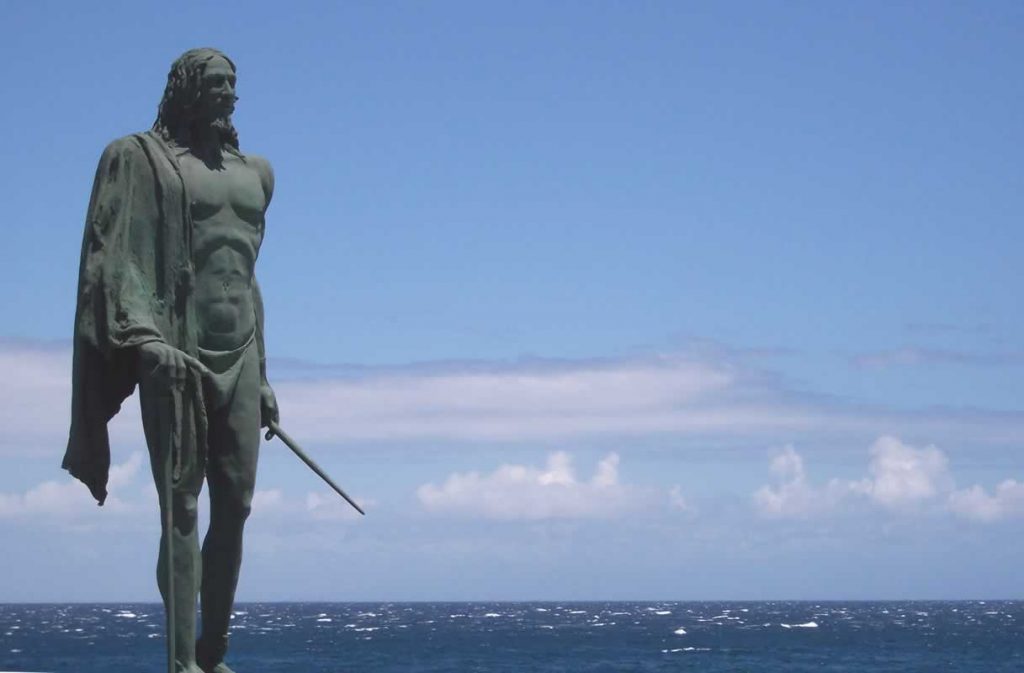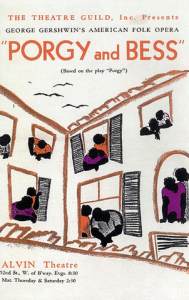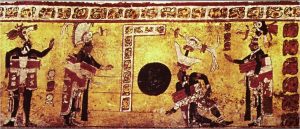During the late 15th century, Spanish sailors encountered a series of islands: Tenerife, La Palma, Gran Canaria, and Gomera–located west of Africa and now known as the Canary Islands. Since these lands had the adequate conditions for growing sugar and producing wine, products in high demand in Europe, it was not long before plantations and trading posts were build by the Spanish.1

Apart from having profitable resources, the islands also became an important stopping point in the trans-Atlantic trade routes, since the islands lay between the New and the Old Worlds. What is often overlooked, however, is that long before the Europeans set foot on these islands and established trading posts, a group of indigenous people lived on these remote lands; the Guanche, a group of blonde-haired and blue-eyed people, resided on the islands.2
When the Spanish arrived, they were surprised to find that the Guanche people lived in stone age conditions: taking shelter in caves and huts, wearing little clothing made of reeds, and using stones and sticks as weapons. Despite their primitive lifestyle, the Guanche lived in a hierarchical society and were ruled by a group of elders and “menceys” (kings). The rest of the tribe consisted of farmers who raised goats, pigs, and sheep in the hills, and with their basic techniques, planted seeds in the valleys. They built pyramids in an east-west alignment indicating that they worshiped the rising and the setting of the sun; they also made pottery and mummified their dead.3

Once the Guanche were discovered by the Europeans, they suffered the same fate that most tribes did in this era; they were forced into slavery on sugar plantations. As a result of harsh labor and of the devastation to the Guanche population, their culture barely survived.4 But if we could rewind time back to the days before the Spanish encountered the Canary Islands, we would still be left with some important questions: How did the Guanche arrive in the Canary Islands? From where do they originate?
There are several theories regarding the mysterious arrival of the Guanche in the Canary Islands, but none are certain. The most mentioned and supported hypothesis is that the Guanche tribe were descendants of the Moroccan Berber tribesmen. Researchers have discovered that the Guanche had similar homes, burial practices, and rock carvings as the tribes that once resided in North Africa. The story goes that there was a group of Berbers in the fifth century who rebelled against the Romans, and were thus exiled to the Canary Islands. It is argued that the Guanche originated from this region because their physical traits, specifically the blond hair and blue eyes, are often also seen among the Berbers, and that Guanche’s whistle-like language “tamazight insular” has its origins in the Berber’s language.5

On the other hand, historian Caroline Spence argues that the Guanche do not originate from Morocco in North Africa; instead, they come from Egypt. According to this theory, the tribe used papyrus reeds to make the boats they used to travel to the islands, and because this material rots rapidly, it would explain why no boat remains were ever discovered.6 There are several other cultural characteristics that tie the Guanche to the Egyptians. For example, both civilizations worshiped celestial bodies and had similar practices when dealing with their dead. The Guanche mummified the bodies of the elite with similar techniques to that of the Egyptians, like binding the nails, packing the body with stuffing, and painting the hair of the mummy with henna. Also, several small step pyramids were found in the Canary Islands that are similar to the Egyptians.’ However, it is unknown whether it was the Guanche who built these pyramids to hold celebrations on or whether they were built after the islands were discovered by Spanish farmers who were clearing stones.7

Due to their physical characteristics, it is also contended that the Guanche are direct descendants from Europeans who–in 3000 B.C.E.–sailed from what is now the French Coast and the Iberian Peninsula, and were left stranded on these Atlantic islands. There are countless other less credible theories that explain the arrival of the Guanche, including one that the Vikings–who were skilled sailors–transported people to the islands, who then somehow lost their knowledge of seamanship.8 Some even argue that the Guanche are the remains of the sunken city of Atlantis, who over time evolved a new language and style of living.


Undeniably, the arrival of the Guanche on the Canary Islands remains an enigma. It is not known when, how, or in what numbers they arrived; it is only known that there is a link between them and other civilizations. No theory is definitive and it is debatable whether the Guanche even interacted with other civilizations prior to 1494, when Alonso Fernandez de Lugo conquered the Canary Islands enslaving and murdering its indigenous people. Despite this, the Guanche culture is not entirely extinct, because on the island of Gomera, the Guanche’s whistle talk survives as a reminder of the baffling existence of the Guanche.9.
- Jerry H. Bentley, Herbert F. Ziegler and Heather E. Streets-Salter, Traditions and Encounters: A Brief Global History Vol 2 (New York: MacGraw-Hill Education, 2016), 352, Kindle Edition ↵
- In Science and Its Times, 2001, s.v. “Jean de Bethencourt and Gadifer de La Salle Colonize the Canary Islands for Spain,” by Judson Knight. ↵
- Arthur Kemp, March of the Titans: The Complete History of the White Race Vol 1 (Ostara Publications, 2008), Chapter 6 ↵
- George Glas, Barker Webb, Sabin Berthollet, and Miss Haigh, “Some Account of the Island of Teneriffe and Its Inhabitants, at the Time of the Spanish Conquest; Taken from the “History of the Discovery and Conquest of the Canary Islands, by George Glas; and the “Histoire Naturelle Des Iles Canaries,” by Barker Webb and Sabin Berthollet,” Transactions of the Ethnological Society of London, no. 7 (1869): 107-114. ↵
- Mario Garcia Conde and Hector Roldan Delgado, “The Last of the Atlanteans,” Child’s Nervous System Vol. 26, no. 9 (2010): 1131. ↵
- Caroline Spence, “Mystery of the Guanche,” Geographical (Campion Interactive Publishing) Vol 72, no. 8 (2000): 43. ↵
- Caroline Spence, “Mystery of the Guanche,” Geographical (Campion Interactive Publishing) Vol 72, no. 8 (2000): 42. ↵
- Steenie Harvey, “Isles of Eternal Spring,” World & I 17, no. 4 (2002): 178. ↵
- “Conquest of the Canary Islands Explained.” Everything Explained Today. Accessed March 2, 2017 ↵



52 comments
Bailey Rider
This is the second time I’ve read your article and I still love it as much as the first time! It’s amazing to learn about the theories about how theGuanche people got to the island. It’s crazy because I can see how all of the theories could be true. They all seem feasible and believable. You’re article seems well researched and really well written. Thank you again Ana!
Tyler Sleeter
Very informative article. I had never heard of the Guanche people and it is interesting that no one can agree on their origins. They must have been living on the island for quite some time with little interaction with other civilizations to be still living in stage age conditions. It is also interesting to me that different aspects of their culture, language, and appearance can be traced back to other ancient cultures, lending support to several different theories. It is a shame that the Guanche people were destroyed by the people that found them.
Hayden Hollinger
This was a very interesting article and I enjoyed it even more since I have visited the Canary Islands on a couple of occasions but had no idea of the history behind the islands. It was interesting to read of the people that lived there before the Spanish arrived, and that they still lived in stone age conditions. I also found it pretty cool that nobody knows the true background of these people and that it still remains a mystery. I thought you did a great job on this article!
Jennifer Pogue
Awesome article. It was well organized and well explained. It is truly fascinating how historians can not decide on where these people came from. They have very similar traits of Moroccans, Egyptians, and the English, so scholars are unable to decide which one they actually came from. The mysteries of history fascinate me and I wonder if one day we will ever be able to say we know where the Guanch people came from.
Alyssa Valdez
I really enjoyed your article, I thought it was very descriptive and highlighted all the important Key points. I thought your article was very well organized and I can tell you put a lot of time and effort into your research. I must admit that I have never heard of The Enigmatic Guanche People so I thought your article was very informative as well, I guess you learn something everyday!
Mariana Govea
Great article! very well written and researched! I love how you provided many theories and not only stuck to one! Very interesting group of people! Crazy how its still a mystery about them arriving to the canary islands! I liked how you mentioned the Atlantis theory as well its pretty fascinating!
Natalia Zuniga
Great article Ana! I had never heard of the Guanche people. Their story and lives are so interesting. I wish there were a way we could know more about them and their history. I can tell you did a lot a research and showed their story perfectly. The photographs were a great touch to a better idea. Overall great article!
Luke Trevino
Amazing! Very good article. it is obvious this article was very well reserched. It’s crazy that till this day the origins of these people is still Unknow to us. It is sad that as soon as the Europeans arrived they basically wiped out the Guanche. It’s amazing that we recognize some of their traditions with another tribe and that is how we can trace some of their origins, but still disappointing we can’t find their origins in how they got there. Overall great article!
Cesar Zavala
I had never before heard of the Guanche people before reading this article. As all other tribesmen in the history of our planet, they too fell to slavery by a more advanced people. This is a shame that this tribe was forced into slavery which ultimately was the undoing of their culture and practices. Had the Spanish been more understanding of people’s rights, we might have known where they had come from and how they ended up on the Canary Islands. Great article with various opinions as to how the Guanche people originated.
Nicolas McKay
Great Article Ana! I had never heard of the Guanche, but the many theories of their origins were each so fascinating. My favorite has to be the one that says they are from Atlantis, I chuckled for quite a bit when I read that. The theory of their origins from Egypt makes the most sense though. Great job explaining each theory in such great detail.